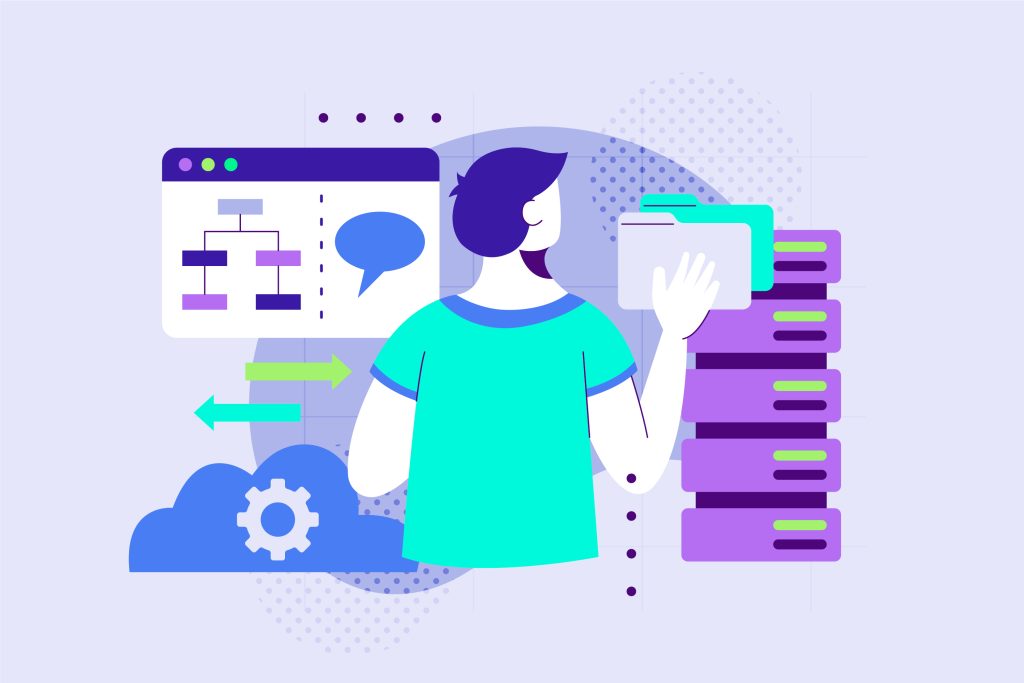As technology continues to evolve and reshape the modern business environment, End User Computing has become a critical component of IT strategy. End User Computing refers to the technologies and applications that allow employees to interact with the information systems and data of their organization. This can include everything from desktops, laptops, and mobile devices to virtual desktops, cloud computing, and software applications.
End User Computing has revolutionized the way businesses operate by enabling employees to work more efficiently, communicate more effectively, and collaborate with their colleagues from anywhere in the world.
What is End User Computing(EUC)?
End User Computing is the combination of hardware, software, and services that provide employees with access to the data and applications they need to do their jobs. This includes devices such as desktop computers, laptops, tablets, and smartphones, as well as the applications and services that run on them.
End User Computing also includes virtual desktops, which allow employees to access their desktop environments from any device with an Internet connection. Cloud computing services, such as Software as a Service (SaaS) and Platform as a Service (PaaS), are also a critical part of End User Computing, as they enable organizations to host their applications and data in the cloud, making them accessible from anywhere in the world.
The Benefits of End-User Computing
1. Improved Productivity
By providing employees with the tools they need to work more efficiently, End User Computing can significantly improve productivity. For example, virtual desktops and cloud computing services enable employees to work from anywhere, whether they’re in the office, at home, or on the go. This can reduce downtime and ensure that employees can access the data and applications they need to do their jobs.
2. Enhanced Collaboration
End User Computing also enables enhanced collaboration between employees. For example, cloud-based applications like Google Docs and Microsoft Office 365 allow multiple employees to work on the same document simultaneously, regardless of their location. This can significantly speed up the collaboration process and reduce the need for multiple iterations of the same document.
3. Increased Flexibility
End User Computing also provides employees with increased flexibility, enabling them to work from anywhere and on any device. This can improve work-life balance and reduce stress, as employees can choose when and where they work. This can also lead to improved job satisfaction, as employees are more likely to feel valued and empowered.
4. Better Security
End User Computing can also improve security by providing centralized control over devices and applications. This can enable organizations to enforce security policies and ensure that employees are using secure devices and applications. cloud-based services can provide robust security features, such as data encryption and multi-factor authentication, that can protect sensitive data and prevent unauthorized access.
Challenges of End-User Computing
1. Data Privacy
End User Computing can make it difficult to maintain data privacy, as employees may access sensitive data from unsecured devices or over unsecured networks. Organizations must implement robust security measures, such as data encryption and multi-factor authentication, to protect sensitive data and prevent unauthorized access.
2. Device Management
End User Computing also presents device management challenges, as organizations must ensure that all devices are up-to-date with the latest security patches and software updates. organizations must manage device access to prevent unauthorized users from accessing sensitive data.
3. Complexity
End User Computing can also be complex, as organizations must manage multiple devices, applications, and services. This can require significant IT resources and expertise, which can strain IT budgets and resources. employees may struggle to adapt to new technologies and require training and support.
End User Computing Best Practices

1. Develop a Comprehensive End User Computing Strategy
Organizations should develop a comprehensive End User Computing strategy that outlines their goals, objectives, and requirements. This strategy should consider the needs of employees, the organization’s IT infrastructure, and any regulatory requirements.
2. Implement Robust Security Measures
Organizations must implement robust security measures, such as data encryption, multi-factor authentication, and access controls, to protect sensitive data and prevent unauthorized access.
3. Provide Employee Training and Support
To ensure that employees can effectively use End User Computing technologies, organizations must provide comprehensive training and support. This can include user manuals, online tutorials, and help desk support.
4. Manage Devices and Applications
Organizations must manage devices and applications to ensure that all devices are up-to-date with the latest security patches and software updates. organizations should control device access to prevent unauthorized users from accessing sensitive data.
5. Monitor and Analyze End User Computing Performance
To identify areas for improvement and ensure that End User Computing is meeting organizational goals, organizations must monitor and analyze performance metrics. This can include metrics such as employee productivity, application uptime, and security incidents.
Frequently Asked Questions About EUC
1. What is the difference between End User Computing and Virtual Desktop Infrastructure (VDI)?
End User Computing refers to the technologies and applications that allow employees to interact with the information systems and data of their organization. VDI is a specific End User Computing technology that enables employees to access their desktop environments from any device with an internet connection.
2. How can End User Computing improve employee productivity?
End User Computing can improve employee productivity by providing employees with the tools they need to work more efficiently. This includes virtual desktops and cloud computing services that enable employees to work from anywhere, collaboration tools that allow employees to work together more effectively, and mobile devices that enable employees to work on the go.
3. What security risks does End User Computing present?
End User Computing can present several security risks, including data breaches, unauthorized access, and malware infections. To mitigate these risks, organizations must implement robust security measures, such as data encryption, multi-factor authentication, and access controls.
4. How can organizations ensure data privacy in End User Computing environments?
Organizations can ensure data privacy in End User Computing environments by implementing robust security measures, such as data encryption, multi-factor authentication, and access controls. organizations should limit access to sensitive data and monitor user activity to detect and prevent unauthorized access.
5. What are the benefits of virtual desktops in End User Computing?
Virtual desktops are a critical component of End User Computing, as they enable employees to access their desktop environments from any device with an internet connection. This can improve productivity, enhance collaboration, and increase flexibility.
6. How can organizations manage End User Computing complexity?
Organizations can manage End User Computing complexity by developing a comprehensive End User Computing strategy, implementing robust security measures, providing employee training and support, managing devices and applications, and monitoring and analyzing performance metrics.
Conclusion
End User Computing has become a critical component of IT strategy in modern business environments. By providing employees with the tools they need to work more efficiently, communicate more effectively, and collaborate with their colleagues from anywhere in the world, End User Computing can help organizations achieve their goals. it also presents several challenges that organizations must overcome by adopting best practices, such as implementing robust security measures, providing employee training and support, and managing devices and applications.
































































